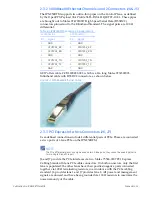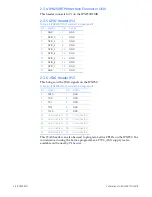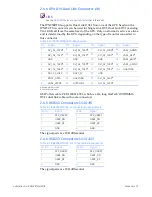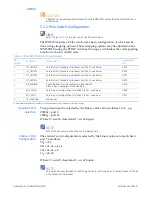
26 IPN250RTM
Publication No. IPN250RTM-HRM/2
3 • Switches and LEDs
3.1 Switches
DIP switches are used on the IPN250RTM to select particular functionality, as
described in Table 3-1 (COMs, JTAG, System Controller, etc) and
switch configuration).
LINK
Refer to
for the location of the P7 switch bank.
NOTE
Links on headers P7 and P8 are no longer operable.
3.1.1 Miscellaneous Signals
Closing
a
switch
takes
the
corresponding
function
to
the
low
(GND)
state.
System Controller
The
IPN250
associated
with
this
RTM
can
be
made
System
Controller
via
DIP
switches
on
the
IPN250RTM,
the
backplane
or
the
FABRTMP1.
CAUTION
Only set System Controller on
one
of the backplane, the IPN250RTM or the FABRTMP1 (more than
one may result in the incorrect payload board or multiple payload boards being set as System
Controller). Whichever is not used should have DIP switches/links set/left open.
CAUTION
A system should not contain more than one System Controller.
Table 3-1 IPN250RTMA P7 Switch Assignments
P7
Switch
Function
Description
Associated
LED
1
COM12_FRONT~
Closed = COM ports on IPN250 front panel are active
Open = Rear COM ports (on IPN250RTM) are active
DS26
2
BOOT_FWH~
Leave open (= IPN250 has Firmware Hub Boot disabled)
DS25
3
HDMI_SE2
Closed = DVI selected
Open = HDMI selected
-
4
JTAG_GPU~
Closed = GPU enabled for JTAG operation
Open = Normal operation
DS23
5
TESTMODE
Reserved for future use
DS22
6
SYSCON~
Closed = IPN250 associated with this RTM is System Controller
Open = IPN250 associated with this RTM is not System Controller
(see below)
DS21
7
NVMRO
Closed = All non-volatile memory in system write-enabled
Open = All non-volatile memory in system write-protected
(see below)
DS20
8
DEDI_SEL_SW
Closed = Dediprog programming of IPN250 selected
Open = Normal operation
-




































